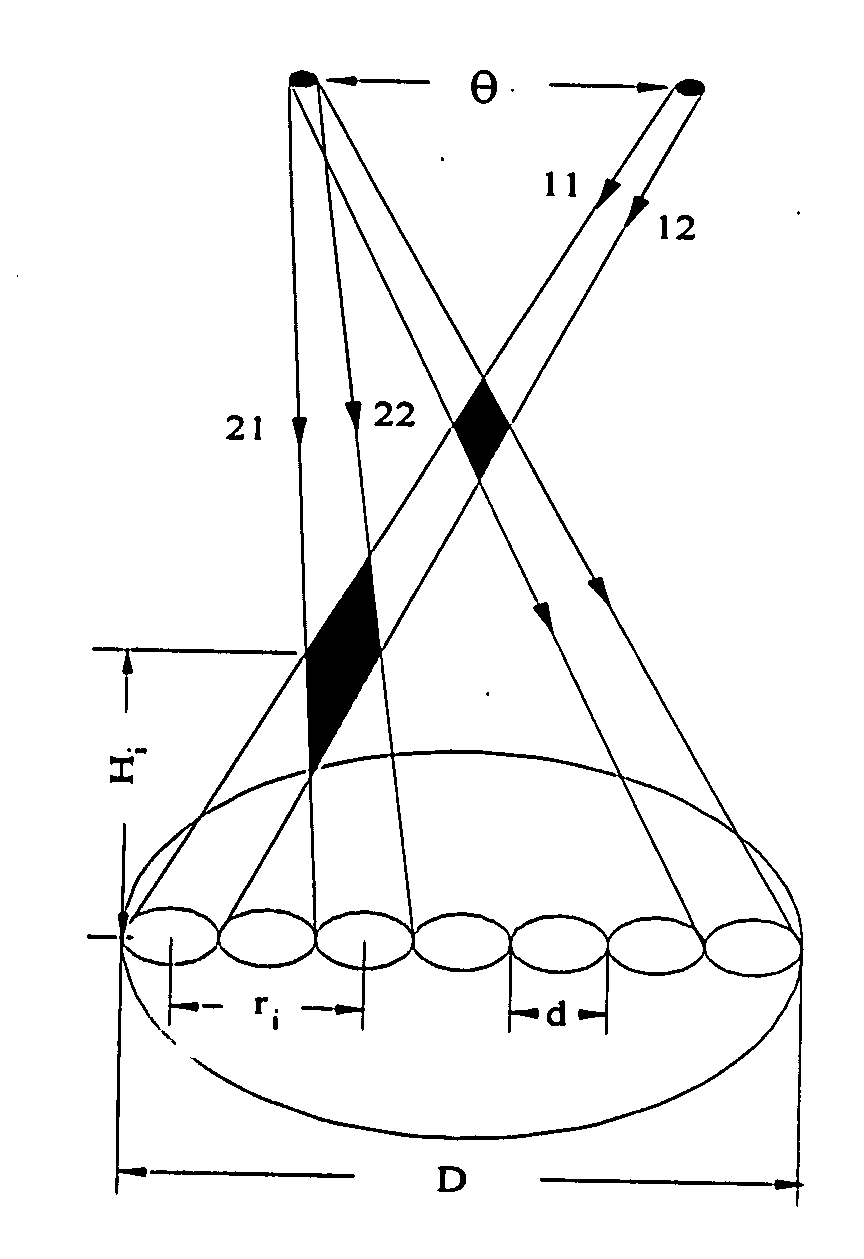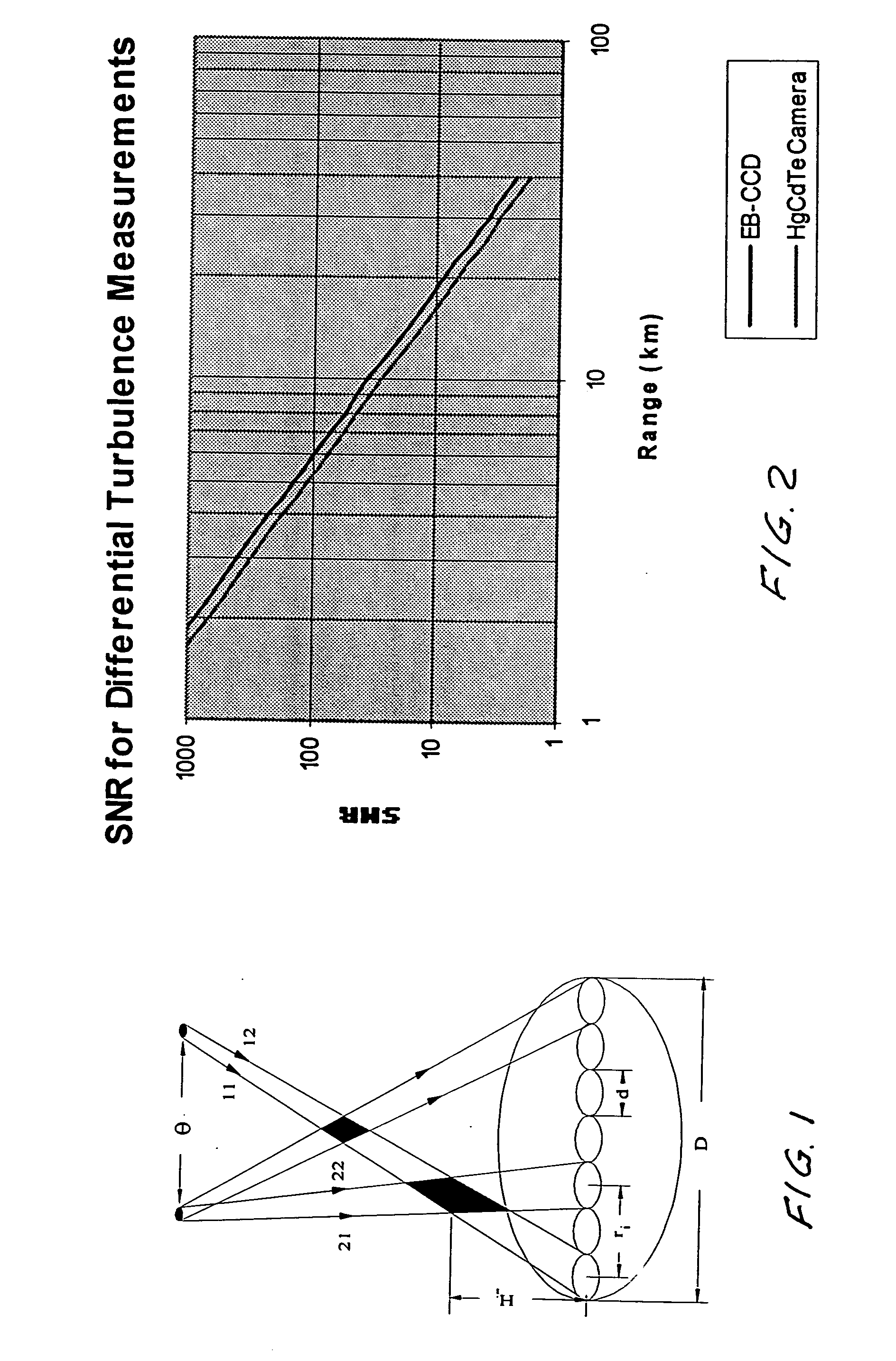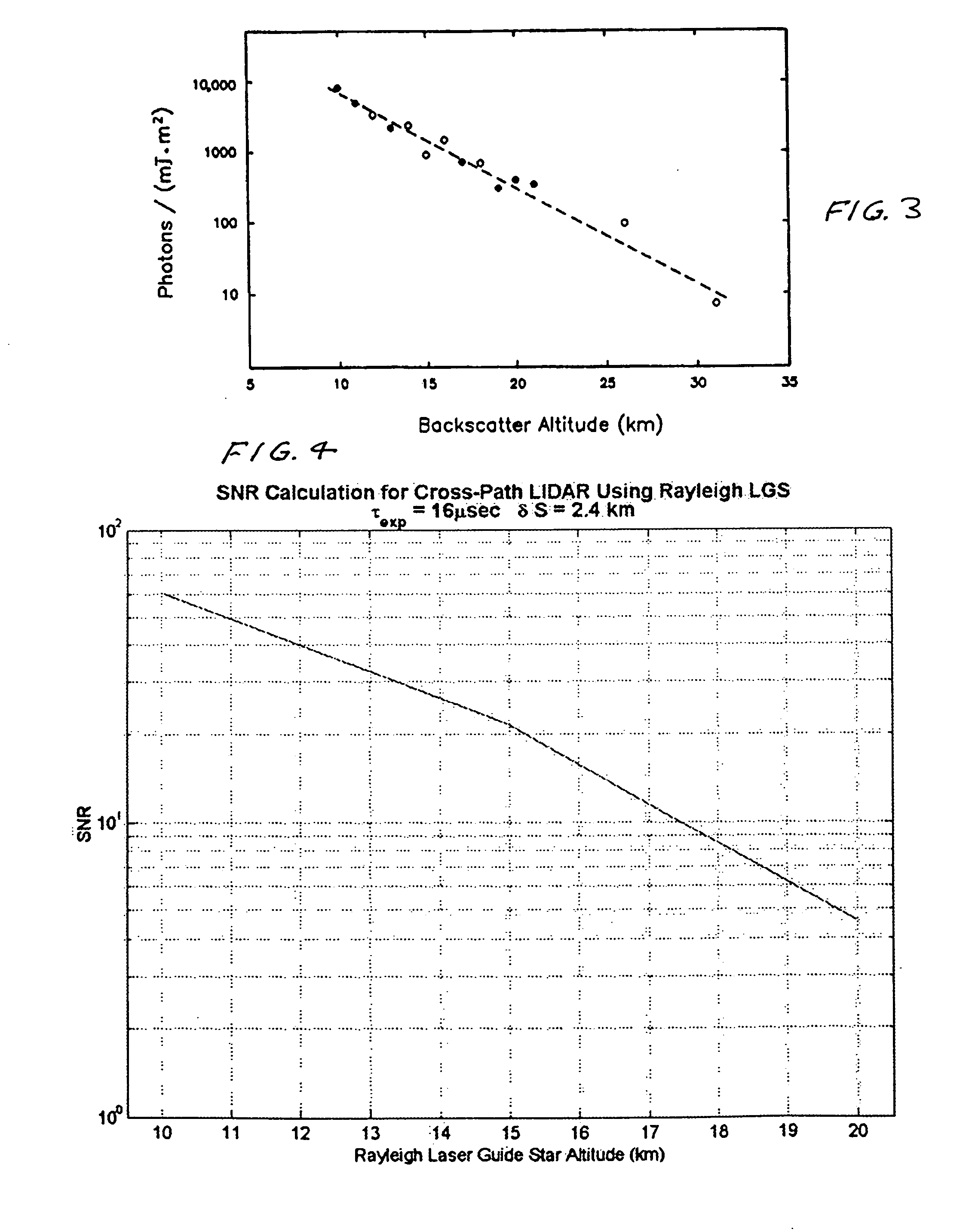System for measuring atmospheric turbulence
a technology of atmospheric turbulence and system, which is applied in the direction of ict adaptation, reradiation, instruments, etc., can solve the problems of inability to use temperature probes in many situations, limited to weak scintillation regimes, and limited resources, so as to improve the performance of adaptive optics and accurate estimates
- Summary
- Abstract
- Description
- Claims
- Application Information
AI Technical Summary
Benefits of technology
Problems solved by technology
Method used
Image
Examples
Embodiment Construction
Cross-Path LIDAR Concept
[0050] The cross-path LIDAR uses two laser guide stars (LGSs) separated at angular distance θ that are created at the fixed measurement range using a pulsed laser. The wavefront slopes of a laser return from each LGS are measured with a Hartmann wavefront sensor having nsub=D / Dsub sub-apertures, where D is the telescope aperture diameter, Dsub is the sub-aperture diameter.
[0051] The physical principal of the cross-path LIDAR is the following. For a binary LGS with angular separation θ a single turbulent layer at altitude H produces two “copies” of the aberrated wavefront in the pupil plane of the telescope, shifted by distance S=Hθ with respect to one another. Hence, the cross-correlation of the wavefront slopes has a peak at baseline separation S in the direction of the binary separation. Consequently, the cross-correlation of the wavefront slope at the separation S is sensitive to the strength of turbulence of the turbulent layer located at the altitude H...
PUM
 Login to View More
Login to View More Abstract
Description
Claims
Application Information
 Login to View More
Login to View More - R&D
- Intellectual Property
- Life Sciences
- Materials
- Tech Scout
- Unparalleled Data Quality
- Higher Quality Content
- 60% Fewer Hallucinations
Browse by: Latest US Patents, China's latest patents, Technical Efficacy Thesaurus, Application Domain, Technology Topic, Popular Technical Reports.
© 2025 PatSnap. All rights reserved.Legal|Privacy policy|Modern Slavery Act Transparency Statement|Sitemap|About US| Contact US: help@patsnap.com



